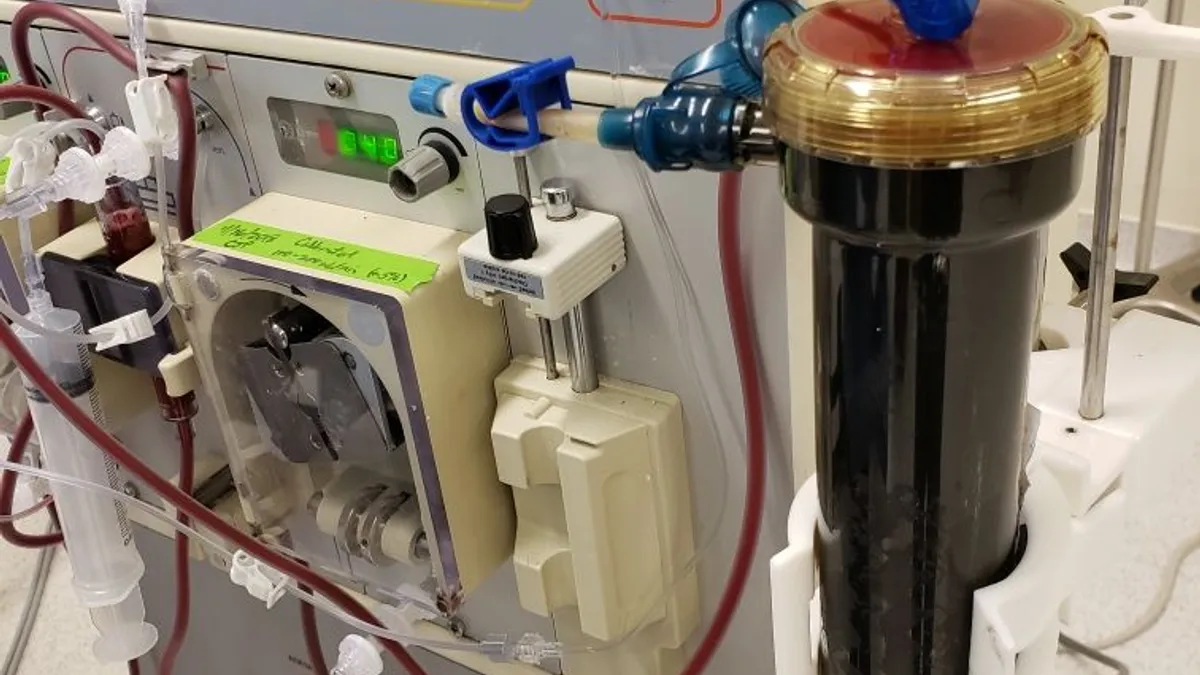Sigyn Therapeutic’s new CFO is betting the medical technology company can overcome stock market volatility to unlock a longer-term financing runway through a shelf registration and an uplisting to the Nasdaq exchange from the more thinly traded pink sheets.
“Look, timing-wise it just makes it more difficult,” said Sigyn CFO Jeremy Ferrell of the volatility. But he believes that the company's progress on the research front is a compelling story that will draw more investors. "It’s never easy but having positive clinical data will help us in the process."
Ferrell is one of many CFOs carefully weighing the uncertainty around tapping the public markets as a financing option amid the intensifying global headwinds from the conflict in Ukraine and soaring inflation that is coming on top of a drop in investor appetite for the biotech sector.
The paths they are choosing are mixed. Alzheimer's drug developer Annovis Bio's CFO Jeffrey McGroarty said in January that its most likely source of the next round of capital would be the equity markets. But Scribe Therapeutics' CFO David Parrot has held back from pursuing an initial public offering, saying the market was not conducive to the move right now.
Sigyn, like many startups, has been burning cash as it focuses on research and development. The company reported a net loss of $3 million in 2021, compared to $1.3 million in 2020, according to an SEC filing. The San Diego-based company, which has 10 employees, is developing a system which filters toxins from blood, with a focus on treating pathogen-associated conditions like sepsis, a leading cause of hospital deaths.
A major event
Ferrell took Sigyn’s finance helm last month in the wake of the company’s February announcement that it completed a successful trial in animals. This quarter the company hopes to file an investigational device exemption with the FDA to begin human clinical studies of its dual-function blood purification device.
As the firm’s first CFO, Ferrell's start marks a new stage for the company, he said. “They’ve basically had limited resources,” he said. “Now they want to go forward with human trials and ... they need to raise capital to move forward so that’s the impetus to have a full-time CFO.”
At least one analyst agrees Sigyn is at a turning point. The recent animal study was a “major event,” according to a March 2 report written by Rob Goldman of Goldman Small Cap Research. “With the potential to treat multiple unmet bacterial and viral life-threatening conditions such as sepsis, we maintain SIGY may ultimately be worth a premium to the medical device arena,” the report states. Goldman has a stock price target of $9, well above the $0.38 range it has been trading in.
Ferrell’s priority as CFO will be to work with investors to raise the capital needed. The raise could be in the range of $10 million to $15 million although the amount may depend on the scope of the study and how many people will need to be part of the trial, he said.
The company is currently preparing a draft of its S-1 filing in support of the new stock offering that would also provide the capital it needs to move to the more liquid Nasdaq, he said. Ferrell hopes to be able to execute the offering in the second or third quarter if the company can get approval from the Securities and Exchange Commission. While the timing is not certain, he then hopes to make the move to the bigger exchange by year-end, which would give the firm a high profile and draw more institutional investors, he said.
The company has some advantages that will smooth the way for the move. It already regularly files financial reports with the SEC and has a publicly traded stock. But one of requirements it still must meet to be eligible for the Nasdaq listing is to get its stock price to at least $4. Ferrell is considering doing a reverse stock split to help boost the shares but also hopes that positive results from trials will give it momentum.
Ferrell hopes to make a direct leap to Nasdaq but alternatively the comany could "stair-step" up from the pink sheets to the OTCQB Venture market, a mid-tier option. “We could step up, but ideally we want to push for and move to Nasdaq,” he said.












